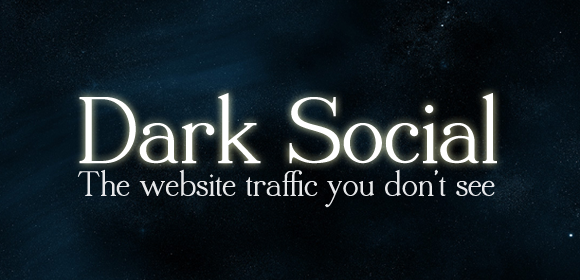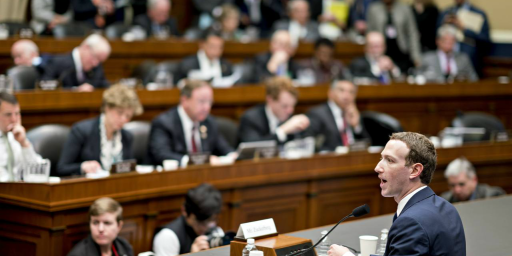Dark Social: The Hidden Web
The "social web" was with us long before the rise of Facebook, Twitter and its kind and that the old style sharing is actually much more important than the new.
The Atlantic’s Alexis Madrigal argues* that the “social web” was with us long before the rise of Facebook, Twitter and its kind and that the old style sharing is actually much more important than the new.
I spent most of the 90s as a teenager in rural Washington and my web was highly, highly social. We had instant messenger and chat rooms and ICQ and USENET forums and email. My whole Internet life involved sharing links with local and Internet friends. How was I supposed to believe that somehow Friendster and Facebook created a social web out of what was previously a lonely journey in cyberspace when I knew that this has not been my experience? True, my web social life used tools that ran parallel to, not on, the web, but it existed nonetheless.
I was in my 20s that decade but participated in all that, too, along with a goodly number of BBS sites. And, yes, that was very much a social experience if much more niche than what’s possible now with Twitter and Facebook.
Like Madrigal, I’m interested in web referral traffic since I run websites.
One dirty secret of web analytics is that the information we get is limited. If you want to see how someone came to your site, it’s usually pretty easy. When you follow a link from Facebook to The Atlantic, a little piece of metadata hitches a ride that tells our servers, “Yo, I’m here from Facebook.com.” We can then aggregate those numbers and say, “Whoa, a million people came here from Facebook last month,” or whatever.There are circumstances, however, when there is no referrer data. You show up at our doorstep and we have no idea how you got here. The main situations in which this happens are email programs, instant messages, some mobile applications*, and whenever someone is moving from a secure site (“https://mail.google.com/blahblahblah”) to a non-secure site (http://www.theatlantic.com).This means that this vast trove of social traffic is essentially invisible to most analytics programs. I call it DARK SOCIAL. It shows up variously in programs as “direct” or “typed/bookmarked” traffic, which implies to many site owners that you actually have a bookmark or typed in www.theatlantic.com into your browser. But that’s not actually what’s happening a lot of the time. Most of the time, someone Gchatted someone a link, or it came in on a big email distribution list, or your dad sent it to you.
Now, this is likely not all that interesting to the average user. But I never quite realized this. I knew that a substantial amount of OTB’s traffic was “dark,” but assumed it was coming in from bookmarks and whatnot. Could that many people be emailing our stories around?
At The Atlantic, what Madrigal terms “dark social” makes up a whopping 56.6 percent of their entire social media referral traffic. That’s more than double what Facebook sends and five times what Twitter sends. And, it turns out, The Atlantic gets more of its traffic from the big boys than most outlets because they’re so good at sharing content. On the sites that utilize Chartbeat, a full 69 percent of social referrals are of the “dark” variety, with Facebook at 20 percent and Twitter at 6 percent. And “dark social” accounted fro 17.5 percent of total site traffic, second only to search (i.e., Google, Yahoo, Bing).
From this, Madrigal draws a conclusion that may be of interest even to those who don’t run websites:
[T}he social sites that arrived in the 2000s did not create the social web, but they did structure it. This is really, really significant. In large part, they made sharing on the Internet an act of publishing (!), with all the attendant changes that come with that switch. Publishing social interactions makes them more visible, searchable, and adds a lot of metadata to your simple link or photo post. There are some great things about this, but social networks also give a novel, permanent identity to your online persona. Your taste can be monetized, by you or (much more likely) the service itself.
[…]
If what I’m saying is true, then the tradeoffs we make on social networks is not the one that we’re told we’re making. We’re not giving our personal data in exchange for the ability to share links with friends. Massive numbers of people — a larger set than exists on any social network — already do that outside the social networks. Rather, we’re exchanging our personal data in exchange for the ability to publish and archive a record of our sharing. That may be a transaction you want to make, but it might not be the one you’ve been told you made.
I’m not sure this is wholly true, though, at least in terms of the way that I utilize the services.
I’m only an occasional user of Facebook, but I view it as an asynchronous, non-intrusive means of sharing with acquaintances. I frankly wouldn’t want everyone in my Facebook network to email or direct message me everything that they’re posting on their Facebook walls. Indeed, I’d block all but maybe half a dozen of them if they did. But it’s nice to be able to catch up when something sparks my interest.
Twitter is a combination of a site for sharing links and information as well as for engaging in conversations. (I do very little of that on Facebook.) I don’t know how I’d come close to replicating that experience without a mass use platform.
Then again, I’m a highly atypical user. I make my living in the information industry and am also a relatively high volume publisher of content. For more typical users, Madrigal’s sense of the tradeoffs may well be right.
___________________
*I realized after writing this long post that the article was published in October 2012. I’m not sure why it’s bubbling back up now but I first stumbled on it this morning. Given my high interest in this sort of thing, it’s reasonable to presume few of my readers have seen it.






“Dark Social” has good branding and graphics. I’ll give it that.
I think though that it is a case where a difference in quantity becomes a difference in kind. A “non-social” site doesn’t preclude social interaction. A “social” just eases it, and as you say, ups the volume.
In the olden days we read things cover to cover, start to finish. We paged through Time magazine, and most pages of the daily newspaper. Perhaps we didn’t finish every story, but we had little time pressure. The next issue was at least a day away.
Perhaps those of us using RSS readers are still rooted in that age, and the idea that we can page through “it all.” New media aren’t like that. They have a social aspect, certainly, but they are also about dipping in to find something. No one with a reasonable amount of social media linkages “keeps up.”
If you want to read something interesting, twitter can find you something, via links, from your “mavens.”
(One suggested flip-side is The iPhone Killed My Creativity)
BTW, I’m not sure the “social” referral tracking is as sure-fire as the author implies:
Twitter Referrals and Web Analytics – A Broken Referral Link
More recent and complete:
Google Analytics: 21 Inaccurate Traffic Sources, Setup Mistakes …and Fixes
It says there is a confusing picture, with social media generating what sometimes looks like direct and sometimes looks like referral traffic.